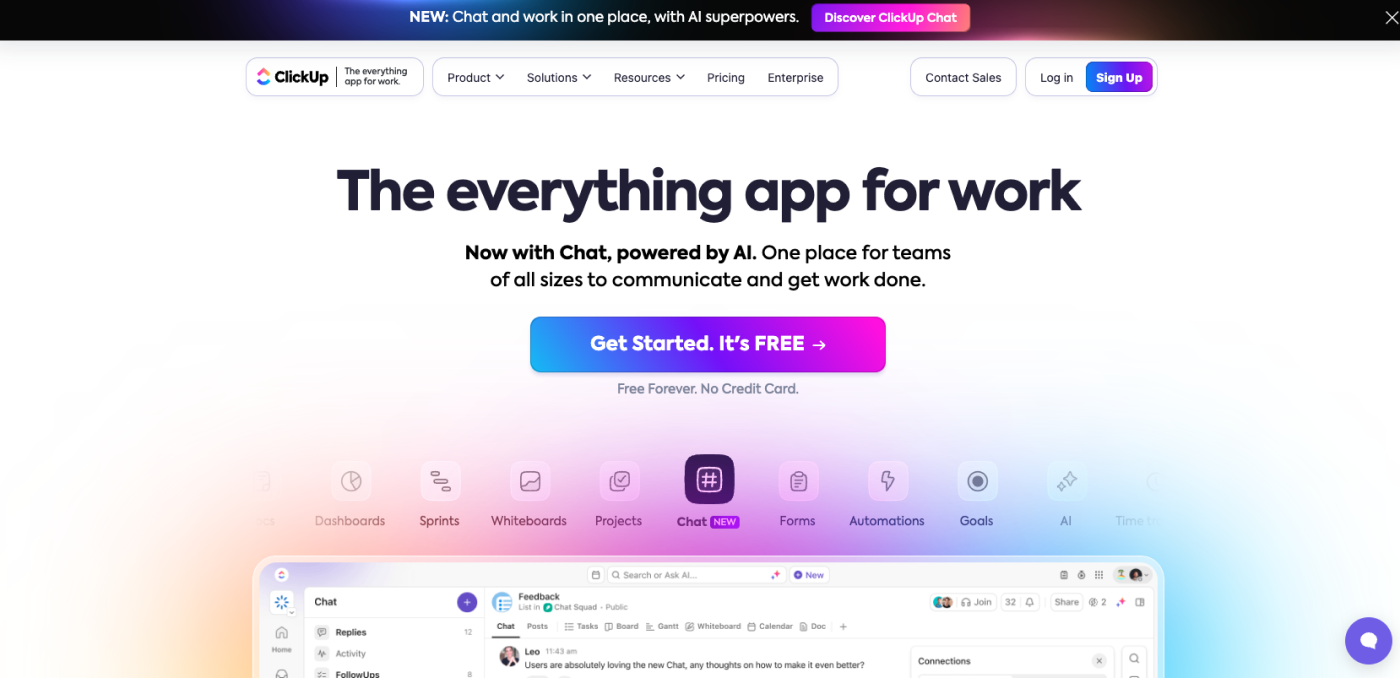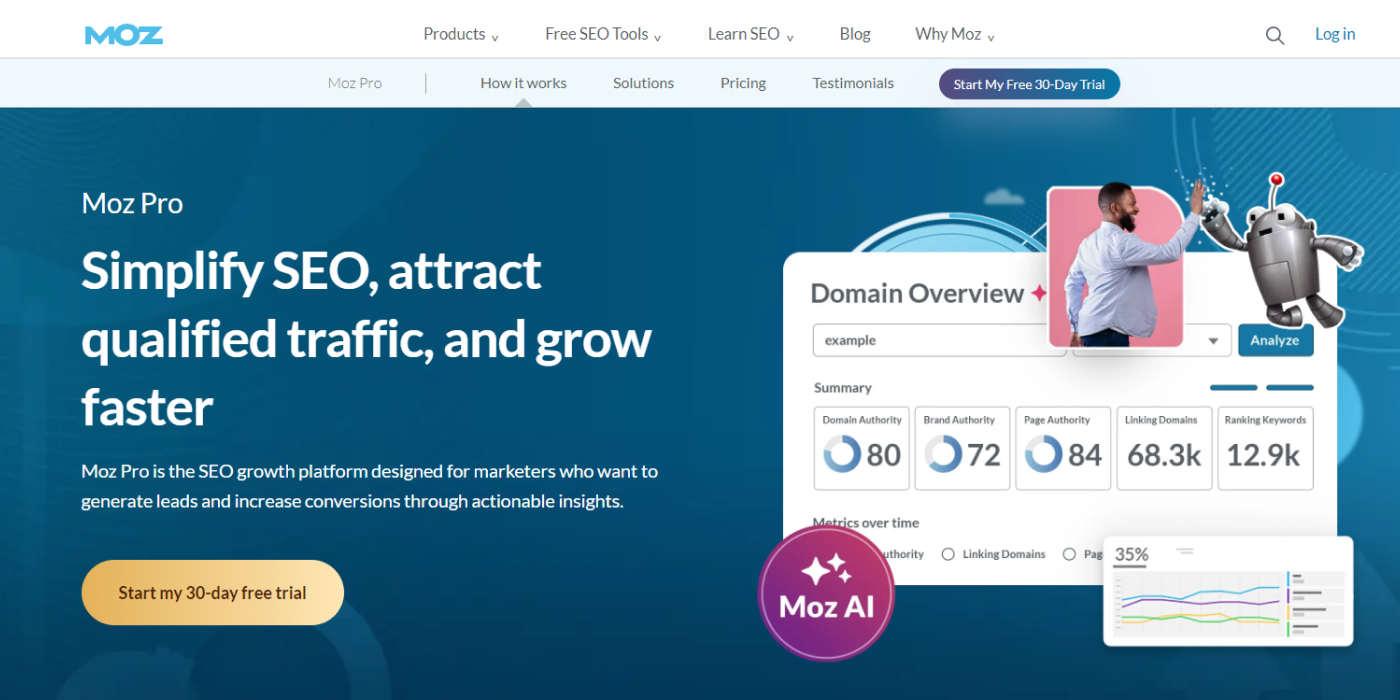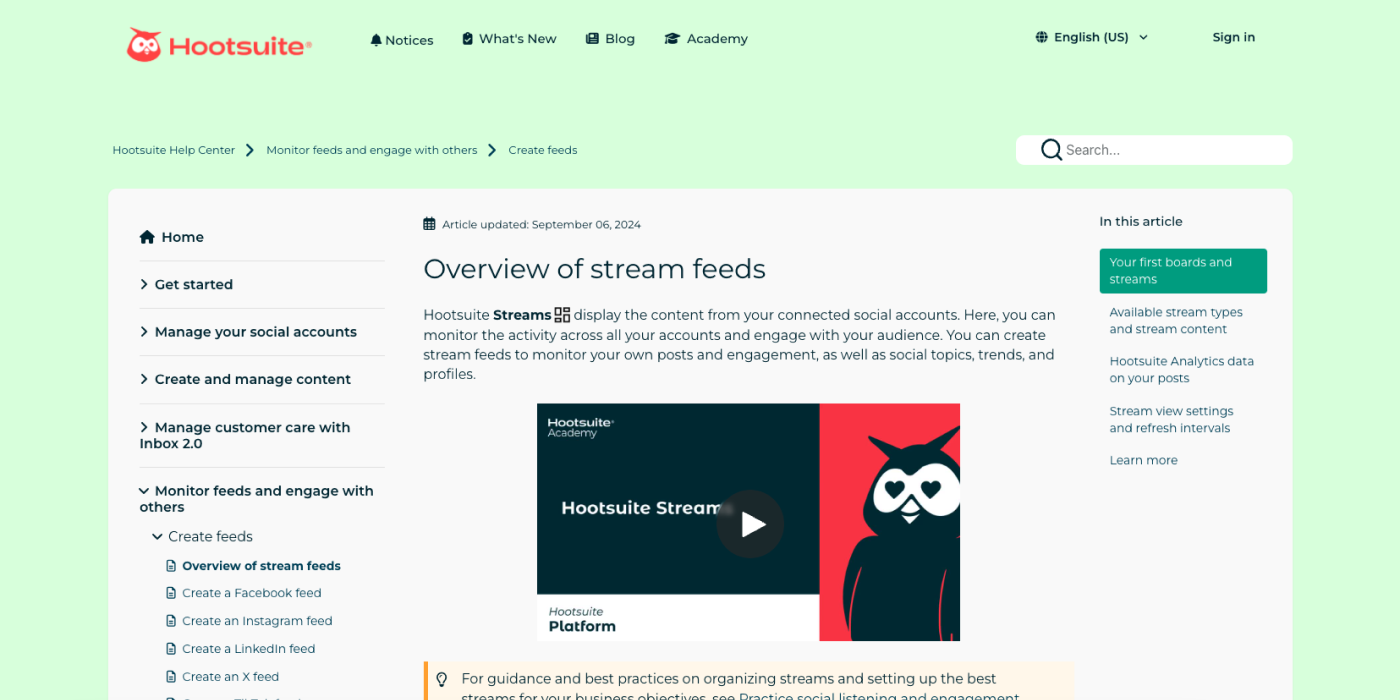Saas Competitor Analysis: A Complete Guide for Your Brand
Table of contents
- What is SaaS Competitive Analysis?
- What are the Advantages of SaaS competitive Analysis?
- Define Your Competition And Industry Landscape
- How to do SaaS Competitor Analysis?
- 5 Key Elements to Cover in Your SaaS Competitive Analysis
- 3 Competitive Analysis Frameworks
- Top Tools for Conducting SaaS Competitive Analysis
- Conclusion
The SaaS industry is experiencing significant growth yearly, with impressive statistics highlighting its expansion. In 2021, the United States alone has approximately 15,000 SaaS companies, collectively serving around 14 billion users globally. Additionally, as we progress into 2024, the global count of SaaS companies continues to rise, indicating a broader expansion trend across borders.
As the quantity of SaaS companies continues to grow, so does the level of competition within the market. If you are a SaaS Company and want to survive in the market, you must use a SaaS competitor analysis strategy and enterprise SEO SaaS. This blog will guide you on "How to do competitor analysis in SEO." We'll cover why it's essential, the benefits, key aspects, and the best tools to help you in this process and improve your saas marketing strategies.
What is SaaS Competitive Analysis?
SaaS competitive analysis is a strategic process, including competitor analysis for SEO, that involves in-depth research and evaluation to understand how your company or product compares to others in the Software as a Service (SaaS) industry.
This comprehensive examination involves identifying direct competitors and meticulously scrutinizing their strategies, campaigns, and operational practices, including SaaS keywords research.
Engaging with a SaaS marketing agency can provide valuable insights and expertise to enhance your competitive analysis and refine your market positioning.
The purpose is to gain valuable insights, enabling your company to identify and capitalize on opportunities. While the primary focus is on direct competitors, it is also advisable to recognize potential indirect competitors that may pose a minor threat but could become competitors in the future.
What are the Advantages of SaaS competitive Analysis?
The advantages of conducting step-by-step competitor analysis in the SEO provide invaluable insights and strategic benefits for businesses in the software-as-a-service (SaaS) industry. Here are six key reasons why undertaking such an analysis is a must:
Building a Strong Unique Value Proposition (USP):
When someone questions why your product is better than a competitor's, a competitive analysis gives you the ammo to answer convincingly. Whether it's a superior user experience or unique features, knowing your strengths helps shape a compelling Unique Value Proposition. You can then translate these insights into attention-grabbing landing pages.
Stay Relevant in the Market:
Regular competitive analysis keeps you in the loop about what's working now. If your competitors implement a new strategy, you can spot the gaps and create better content or features.
Getting Ahead:
Whether your competition is a big or a small company, they probably have some weak spots. Their SaaS content marketing strategy may be inconsistent, or their website content may be irrelevant. You can swoop in and offer what they can't by keeping tabs on this. It is about turning your weaknesses into your strengths.
Identifying New Opportunities:
Avoid copying and pasting what your competitors are doing to keep things fresh. An excellent competitive analysis helps you see if there is room for improvement in your product or marketing strategy. Find those gaps and turn them into your chance to outshine.
Customize Sales Strategies:
Whether you are a startup or testing different strategies, competitive analysis helps you pinpoint what works best. It's not just about refining existing strategies but also discovering new approaches that can supercharge your conversions and sales, giving you a competitive edge in the market.
Understanding Your Customers Needs:
Your customers need change. Dig into reviews for your competitors' tools. You get direct insights into what customers love and what is lacking. Use these insights to tweak your product.

Let’s break through your revenue hurdles
We find your primary growth blockers, build expert-led strategies, and provide custom data-driven solutions to help you hit your revenue goals.
Define Your Competition And Industry Landscape

Before you can outsmart your rivals, You have to know who they are. Start by pinpointing your direct competitors, those offering similar products. Then, consider the indirect ones targeting the same customers but with different products.
Next, take a good look at your industry’s big picture. Consider its market size, how fast it’s growing, who your customers are, and any obstacles for newbies trying to join the game.
Now that you’ve understood the market, it’s time to take stock of the strengths and weaknesses of your SaaS marketing strategies, backlinking strategies and Saas marketing customer journey. Look at what they’re selling, how they’re selling it, at what price, and at the customer reviews for their products. This will give you an idea where there is a chance you can thrive, differentiate and excel.
And that’s why really knowing your competition and industry will bring you the most amount of success in the SaaS world. It’s finally clear to you where you fit in, where you can grow, and where you can best shine.
How to do SaaS Competitor Analysis?
Here are some steps to get you started with competitor analysis:
1. Identify Your Top Competitors
When analyzing your competition, the first step is to figure out who they are. Here are two practical methods:
Use search engines: Go to Google and enter the main keywords for your industry. For instance, if you are working for your business related to SEO tools, search for "best SEO tool." The first page of results usually features tools in your niche and articles listing the "best SEO tools." Incorporating SaaS marketing SEO strategies into your search can help identify top-performing solutions and competitive insights.

Check SaaS review websites: Explore platforms like G2, Capterra, and TrustRadius. Search for your industry, and you'll discover competitors you might have overlooked during regular searches. This approach helps you get a more comprehensive view of the competition.
2. Research Their Offerings and Services
The value of any SaaS business lies in its product. During your competitive analysis, look at the features and functionalities of their product. Evaluate the user-friendliness of their interface and SaaS pricing page. Can someone use their product easily without needing tutorials or demos? Also, check for any bugs or downtime issues in their tool.
This in-depth examination will help you understand what makes your product stand out, showcasing the benefits of opting for your solution over your competitors.
3. Evaluate Their Marketing Strategies
Target Keywords: Once you have gathered the list of competitors, use tools like Ahrefs to research keywords your competitors are ranking for. Conduct a keyword gap analysis to identify those golden keywords.
Ahrefs' Site Explorer Tool is your go-to here, allowing you to filter through keyword difficulty, traffic, position, and volume to spot high-impact keywords likely to convert. Investigate the backlinking strategies of your competitors using Ahrefs.
Backlinking Gap Analysis: Backlinks showcase a website's authority, and tools like Ahrefs, used by top SaaS marketing agencies, can help you identify the backlink profile of your competitors, helping you spot the gaps. Understanding which websites are linking to tools similar to yours provides insight into valuable backlink opportunities your competitors might be overlooking.
Content Marketing: Content marketing works as a powerful asset for SaaS companies. Take a closer look at your competitors' high-traffic posts and those holding solid positions on search engine results pages (SERPs). Identify the unique elements that make their content stand out, such as its tone, calls-to-action (CTAs), examples, and content formats. Pay attention to how they seamlessly introduce their tools within their articles. Additionally, dig into their SaaS email marketing strategy, and scrutinize how successful campaigns incorporate these elements to enhance engagement and drive results.
User Experience: A slow-loading or confusing website can drive visitors straight to your competitors. Make sure your website delivers a top-notch user experience by crafting a straightforward navigation structure and prioritizing fast speed and device accessibility.
For example, Trello enhances user experience with features like a search button on its blog, making it easy for readers to find what they need.

4. Customer Engagement, Reviews, and Feedback
Examine how your competitor engages with customers on social media. Analyze their approach towards addressing negative reviews on external platforms.
Gaining insights into these aspects is crucial. For instance, discovering dissatisfaction among your competitor's customers regarding their user interface prompts further investigation into potential UI shortcomings in your product and whether similar issues exist. This examination provides valuable information for refining your strategies and effectively addressing customer concerns.
5. Identify Strengths and Weaknesses
It is essential to be aware of your SaaS company's strengths and weaknesses, but equally critical is understanding those of your competitors to refine your communication strategies.
For example, when creating a listicle on the "best SEO tools," having insights into how your tool compares to competitors allows your team to craft the content more effectively. This knowledge also benefits your sales team, allowing you to contact potential customers more effectively and increase conversion rates.
6. Replan Your SEO Strategy
To refine your SEO strategy, it is beneficial to analyze the effective tactics employed by your competitors and dig into their SaaS seo checklist. Leveraging insights from their research can save you time and resources while steering your strategy in the right direction.
Invest wisely in proven strategies to maximize your marketing impact. When researching your competitors' SEO, use tools that offer concrete data on "how to do competitive analysis in SEO" to guide your decisions. This practical approach ensures a more informed and effective adjustment to your SEO strategy.
Turn website into high paying customers
We drive business growth by optimizing every inbound channel to attract and convert high-quality clients for you
5 Key Elements to Cover in Your SaaS Competitive Analysis
1. Competitor Research:
Begin your SaaS competitive analysis by identifying at least five direct competitors. Consider potential indirect players that could emerge in your niche if direct alternatives are scarce or offer alternative solutions. This comprehensive overview sets the stage for a nuanced understanding of your SaaS tool's competitive environment.
2. Highlighting USPs:
Setting your SaaS product apart from the crowd is essential. Do a competitive analysis to identify distinctive features, user interface, and overall user experience that distinguishes your tool.
For example, ClickUp communicates its unique selling propositions on comparison-based landing pages.

3. Strategic Keyword Research:
Research and find the organic keywords that prominently position your competitors. Attention to search volume, keyword difficulty, current rankings, and associated URLs. Explore competitors' content strategies for each keyword, including creating content clusters around specific terms. This in-depth keyword research, aligned with the SEO competitor analysis checklist, lays the groundwork for enhancing your tool's visibility in search engine results.
4. Marketing Strategies:
Break down the marketing strategies embraced by competitors. Evaluate whether they predominantly rely on blogs or diversify their content with lead-generating ebooks. Identify the social media platforms where they actively engage and scrutinize their email marketing initiatives. This detailed examination of their marketing approach provides valuable insights into effective strategies for connecting with your target audience.
5. Market Share Analysis:
Evaluate the current market share held by your competitors and discern trends in its trajectory. Investigate whether market share fluctuations are linked to introducing new features or other factors. This analysis enables you to identify strategies contributing to market share expansion, presenting opportunities to strengthen your SaaS product’s competitive position. Additionally, consider integrating SEO benchmarking to further develop your understanding of the market dynamics and optimize your product's visibility in search engine rankings.
3 Competitive Analysis Frameworks
Porter’s Five Forces
This framework allows us to measure focus in a segment with five elements. With these insights, you can understand your competition and improve your brand identity.
- New entrants
- Purchasers
- Suppliers
- Alternatives
- Intensity of growth
Growth-Share Matrix
This type of framework involves products that are seen against the market competitiveness and landscape. Once these products are integrated, they can be assessed for growth potential and market share. This approach enables more effective product evaluation and facilitates business expansion.
Perceptual Mapping
Perceptual mapping involves visualizing your product or brand’s position relative to competitors. This framework allows you to assess your product’s positioning compared to others and understand its place in the minds of your target audience.
Top Tools for Conducting SaaS Competitive Analysis
SEMRush

SEMrush is an extensive marketing tool that covers various aspects, including competitor analysis, keyword research, search engine optimization, and PPC management. It allows users to uncover the keywords their competitors target, assess organic and paid traffic sources, analyze content and social media strategies, and explore diverse advertising approaches.
Furthermore, SEMrush provides a complete market analysis feature, helping users evaluate their market position effectively.
Ahrefs

Ahrefs provides features similar to SEMRush, allowing users to conduct comprehensive SEO competitor analysis services. Users can scrutinize competitors' websites, traffic, and strategies through the Site Explorer tool. By entering a competitor's name, a list of keywords for which they rank is generated, and this list can be refined using filters for more precise results.
Furthermore, Ahrefs facilitates thorough site audits, addressing issues impacting your and your competitors' websites within the SEO competitor analysis services.
Ubersuggest

Ubersuggest provides several tools, such as a backlink checker, SEO analyzer, and website traffic checker. They've recently added a feature where you can input a competitor's domain to receive enhanced keyword ideas. With the SEO analyzer, you can discover pages from your competitors that rank well for popular organic keywords, helping you create more engaging and superior content.
Moz

Moz is an all-in-one tool to meet all your SEO needs, offering a specialized feature for SaaS competitive analysis. Through their True Competitor Engine, you can identify your primary competitors, uncover keyword gaps, and pinpoint content opportunities. Additionally, the tool allows users to access three complimentary reports daily, providing an opportunity for a trial before committing to its use.
BuzzSumo

BuzzSumo stands out with its specialized feature for competitor intelligence, making it an essential tool for refining your content strategy. If you're seeking insights on how to do competitor analysis SEO, BuzzSumo has the answers.
By thoroughly examining your competition, you can get insights into the performance of their content, determine optimal platforms, understand their target audience, and compare the effectiveness of your content against theirs. Moreover, BuzzSumo allows you to pinpoint gaps in your competitors' social media strategies, offering actionable opportunities to leverage your SEO approach.
Hootsuite Streams

Hootsuite Streams is a powerful tool that simplifies tracking keywords, hashtags, and competitors across all social channels. Its user-friendly design ensures easy navigation, allowing any team member to access the insights they need in one centralized place.
With Hootsuite, you can track and monitor your competitors' posts, engagement, social topics, and the trends they follow, providing in-depth insights for your strategic planning.
Conclusion
As the SaaS companies rise, conducting thorough competitive analysis is crucial. Start your research by exploring Google and potential competitors' websites within your niche. Collect valuable insights and information to inform your marketing tactics. Establish an action plan for your company's marketing strategies and commit to ongoing competitor analysis to stay ahead of emerging trends and be well-prepared for upcoming challenges.
Don’t miss keyword research, “Why would you want to run a competitive analysis of keywords?" Understanding competitors' keyword strategies provides valuable insights into industry trends, audience preferences, and areas of opportunity. It ensures that your keyword strategy remains relevant and competitive.
For expert guidance, contact Saffron Edge, a digital marketing partner ready to elevate your SaaS business.
Drive Exceptional Growth without an In-House Marketing Team
We drive business growth by optimizing every inbound channel to attract and convert high-quality clients for you
Share with Friends
Get The SaaS Marketing Toolkit
All-in-one resource that features over 20+ major tools tailored for SaaS Business Growth.
Free DownloadSubscribe to our newsletter
Get fresh stories, case studies, and
advice
from successful creators and industry experts.

Subscribe now

Get The SaaS Marketing Toolkit
All-in-one resource that features over 20+ major tools tailored for SaaS Business Growth.
Free Download








